Long-term review done, and (almost) nothing broke. After more than 4,500 km, we take stock of how the Riese & Müller Supercharger Rohloff HS 2019 and the Supercharger2 Rohloff HS 2020 fared as everyday commuters and what to look for in an S-pedelec.

We certainly didn’t go easy on either of the Riese & Müller Superchargers in our long-term test. For two years, they got ridden come rain or shine, we maxed out the carrying capacity of the GX and the route conditions demanded everything from both bikes. When stationary, they spent most of their time outdoors. We rarely cleaned them. Did the bikes mind? No. Not one bit.

After a total of more than 4,500 km and two years of continuous use, we’ve drawn our conclusions on the Riese & Müller Supercharger GX HS Rohloff and Supercharger2 HS Rohloff. Comparing the two bikes was easy as the test track remained the same and the basic spec was identical: S-pedelecs, Bosch Performance Speed Line motors, 1000 Wh DualBatteries, and Rohloff E-14 Speedhub drivetrains. Raise the curtain for the showdown of two commuter experts!
The components of the Riese & Müller Supercharger GX Rohloff HS
S-pedelec stands for speed pedelec, offering electronic assistance up to 45 km/h. This isn’t only noticeable by the wind in your hair but also comes with other changes. For example, a rear-view mirror and a hooter are mandatory on an S-pedelec, and the brakes have to be connected to a taillight to indicate when you’re braking. The S-pedelecs in Riese & Müller’s portfolio can always be recognised by the “HS” abbreviation in the model name, which stands for high-speed. The “GX” in the model name of the Riese & Müller Supercharger GX Rohloff HS indicates a more off-road oriented spec. As such, the Supercharger GX comes equipped with Schwalbe Rock Razor tires featuring aggressive shoulder knobs and fast-rolling tread down the centre. You also get a wide 760 mm handlebar, bar-ends and a front rack. Moreover, our test model featured a removable lock and a discreetly mounted Fabric water bottle on the head tube. Those who regularly encounter gravel roads and rough terrain on their daily commute to work or whenever they ride will greatly appreciate the GX build. We liked the idea, though it brought up a few questions. The first discrepancy is the attachment of the side mirror to the handlebar, which, in combination with the bar ends, simply didn’t want to stay put during our tests. As a result, the mirror fell off when we hit a bump in the road and it broke. Of course, the GX build looks great and offers added safety, especially in poor weather conditions and in winter. However, there’s a big “but” regarding the legal situation.
The Supercharger GX Rohloff HS 2019 in detail
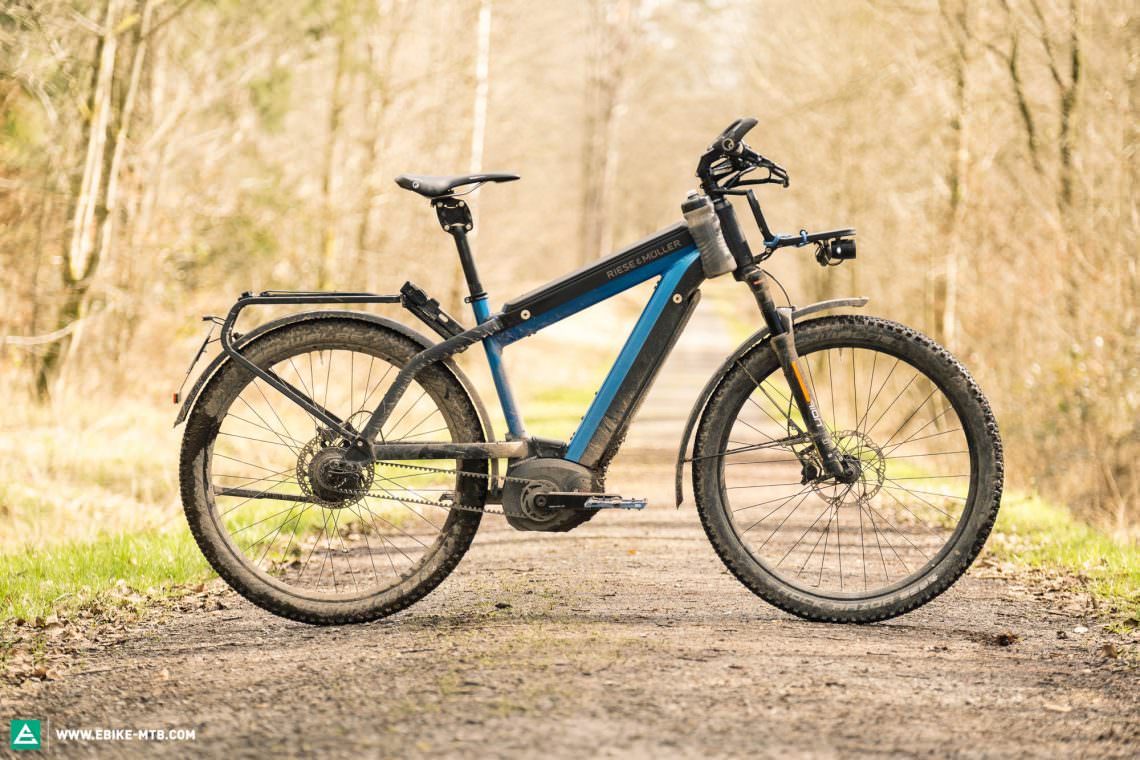
100mm (front) | 29.4 kg | € 6,799 | manufacturer-website
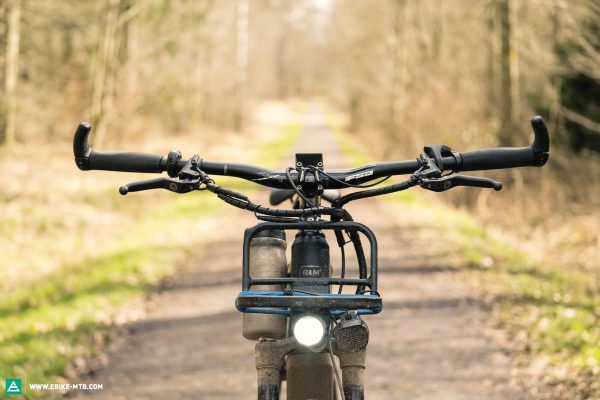
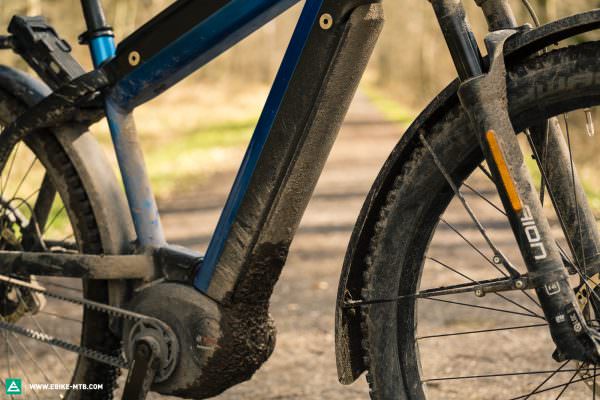
Riese & Müller Supercharger GX Rohloff 2019
€ 6,799
Specifications
Motor Bosch Performance CX 85 Nm
Battery Bosch 1000 Wh
Display Bosch Kiox
Fork SR Suntour Aion 100 mm
Seatpost Cane Creek Thudbuster ST
Brakes Shimano Deore XT
Drivetrain Rohloff E-14 Ganghub 500/14 1x14
Stem FSA Afterburner 90 mm
Handlebar FSA Afterburner 760mm
Wheelset Rodi Tryp35 + Novatec/ QR 27.5"
Tires Schwalbe Rock Razor
Technical Data
Size 46, 49, 53
Weight 29.4 kg
Perm. total weight 140 kg
Trailer approval No
Kickstand mount Yes
Specific Features
Rohloff belt drive
The Supercharger2 Rohloff HS 2020 in detail

100mm (front) | 29.6 kg | from € 8,049 | manufacturer-website
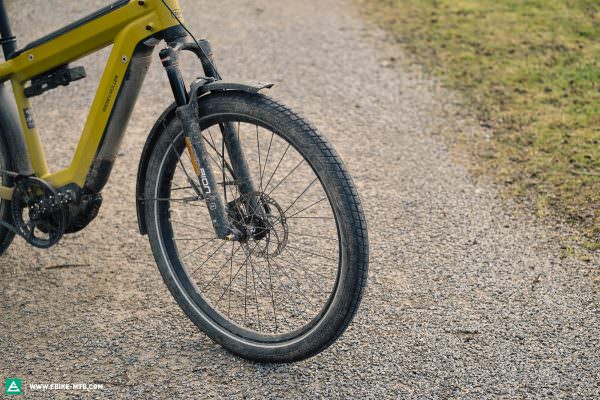
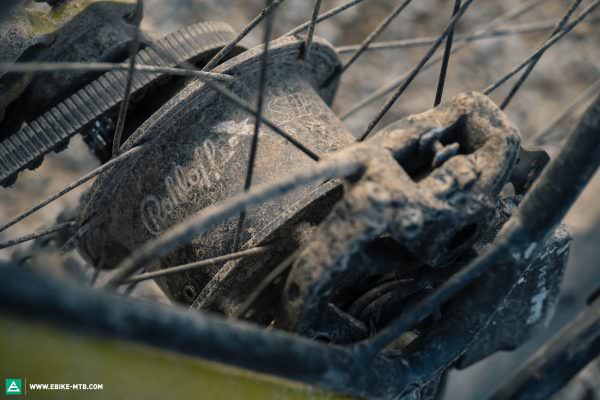
Riese & Müller Supercharger2 Rohloff HS
€ 8,049
Specifications
Motor Bosch Performance CX (Gen4) 85 Nm
Battery Bosch PowerTube 1000 Wh
Display Bosch Kiox
Fork SR Suntour Aion 100 mm
Seatpost Cane Creek New Thudbuster ST
Brakes Magura MT4 & MT5
Drivetrain Rohloff E-14 1x14
Stem Humpert ergotec Barracuda Evo 90 mm
Handlebar Humpert ergotec Ergo XXl
Wheelset Rodi tryp35 + Novatec/ Rohloff 27.5"
Tires Schwalbe Super Moto-X
Technical Data
Size 46, 49, 53, 56
Weight 29.4 kg
Perm. total weight 140 kg
Trailer approval No
Kickstand mount Yes
Specific Features
RX Connect chip
Rohloff belt drive
The precarious legal situation of S-pedelecs like the 2019 Riese & Müller Supercharger GX Rohloff HS
Like in most other EU countries, the S-pedelec fun stops in Germany where the roads end. If you think that you can legally ride your new 45 km/h S-pedelec off-road, we’ve got a bitter pill for you to swallow: you can’t. German road traffic regulations stipulate that S-Pedelecs may be used on public roads, but not on cycle paths, farm roads or in the forest, unless you’ve got a special permit.
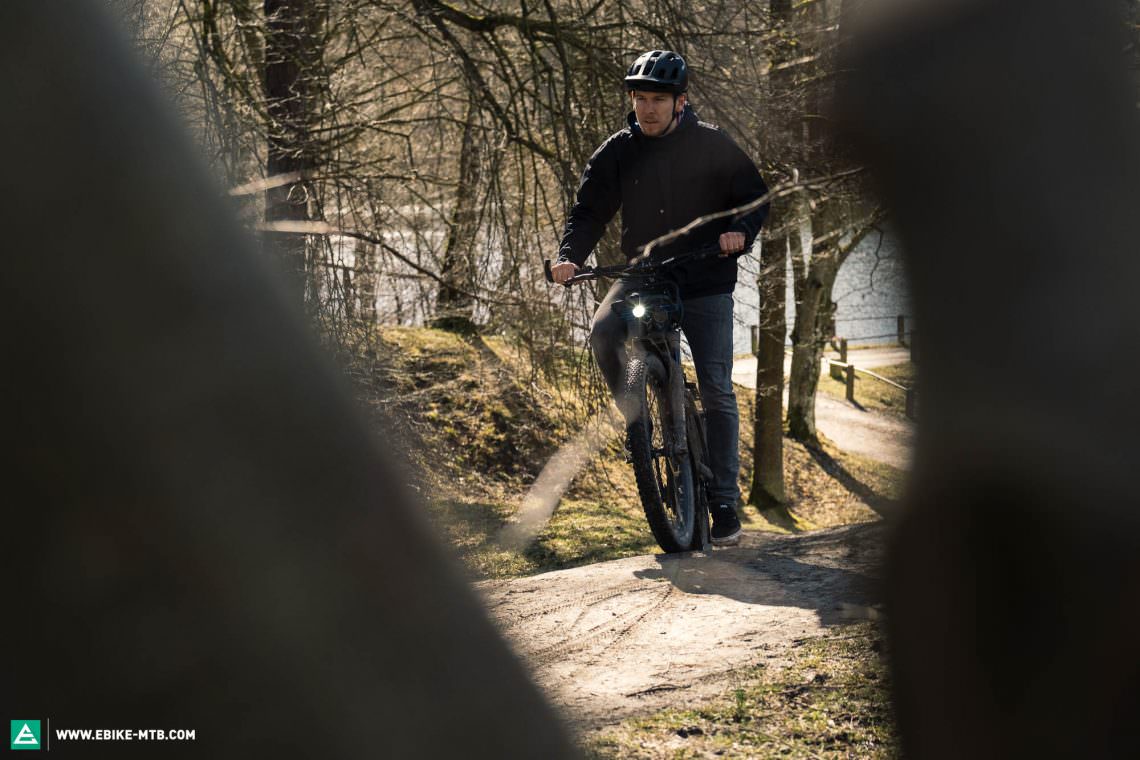
There’s no question about it: S-pedelecs such as the Riese & Müller Supercharger GX Rohloff HS are an ideal means of transport for commuters and would help ease the traffic situation, especially in congested cities like Stuttgart. The legislature is hindering the transformation of urban mobility. In our opinion, this is an ill-conceived regulation as it makes S-pedelec less appealing and prevents people from switching over to one of these instead of a car, negating the ecological, economic and health benefits they bring. Unfortunately, Germany doesn’t yet have any real S-pedelec dedicated infrastructure either. As such, you end up getting stuck in rush hour traffic, crawling along at the same pace as the cars around you and inhaling their exhaust fumes. If you’re not stuck in traffic, you get hooted at by uncomprehending motorists since the fastest you can ride is 45 km/h. Swiss authorities see things differently, allowing S-pedelecs on cycle paths.
Specification details
The electronic Rohloff E-14 drivetrain on the Riese & Müller Supercharger Rohloff HS
Opinions are divided on the Rohloff E-14 drivetrain – combined with a Gates Carbon belt instead of a chain in this case – especially in view of the € 900 surcharge. Our biggest criticism is the shifting speed. If you’re used to the precise and crisp shifting of Shimano groupsets, you will be disappointed with the electronic shifting of the Rohloff. The hub only shifts in volleys of three gears and then has to recover for about a second before shifting another three gears. As long as you only shift one gear at a time to maintain the perfect cadence, that’s not a problem. However, when an unexpected climb rears up in front of you, you’ll quickly find yourself at a standstill as the relatively slow shifting also results in the support of the motor briefly cutting out.
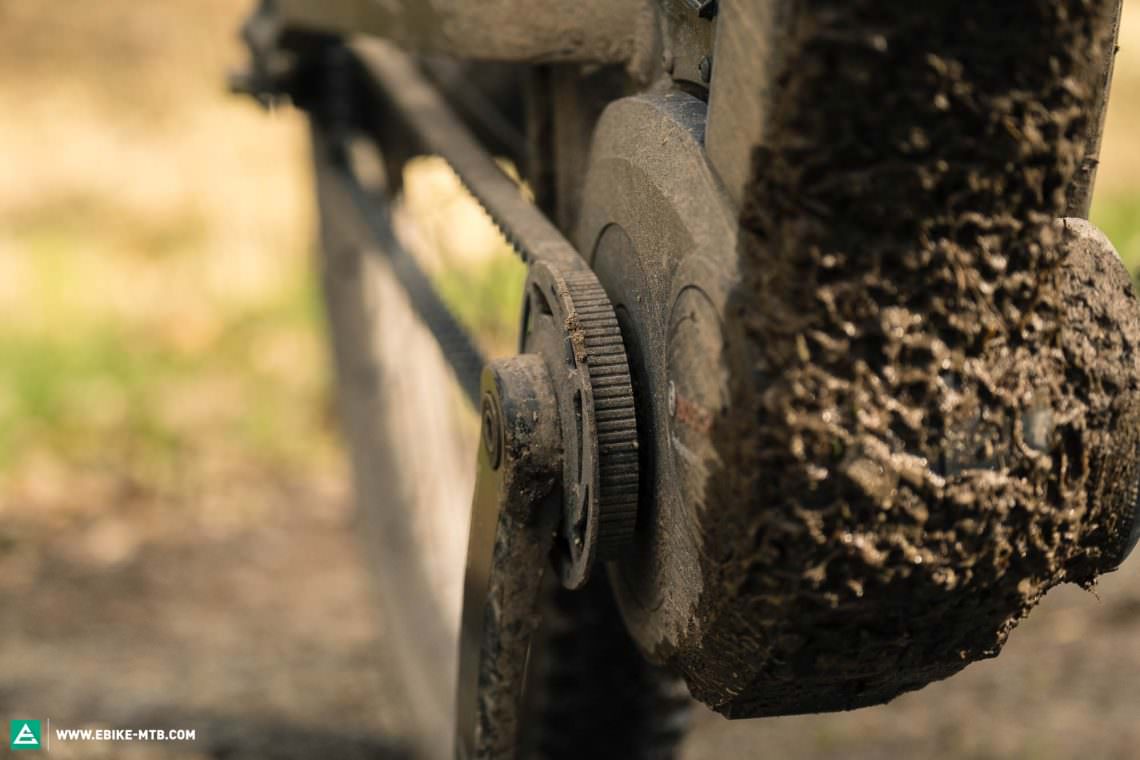
Moreover, it seems as though the gear ratios haven’t been adapted to the purpose of the ebike. When pulling away on flat terrain, you have to start in fifth gear and skip every second gear to get to your cruising speed as quickly as possible, which is usually in gear 13 or 14. The gear jumps in the middle are too small to be useful on flat terrain. However, should an unexpected climb take you by surprise, one of the Rohloff’s advantages is that it can shift while stationary. While it may seem unnecessary at first, you get used to it so quickly that when you get on a bike with a derailleur, you’ll find yourself wondering how you ever managed to navigate city traffic without this feature. Another function that you get used to very quickly is the automatic downshifting into a pre-set gear when you stop. That way you’re always in the right gear to pull away. Probably the biggest advantage of a Rohloff drivetrain and Gates belt is the lack of maintenance it requires. After well over 4,000 km, we didn’t have to retighten the belt on either bike – a conventional chain would have had to be replaced or at least serviced and lubed. The Rohloff Speedhub is an absolute workhorse among drivetrains, though that’s not the say it doesn’t benefit from regular servicing.
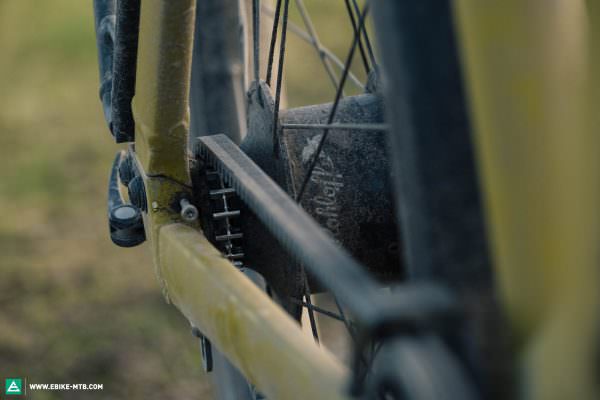

MAGURA MT4 Sport vs MT5/MT4 combination
While opinions remain divided regarding the drivetrain, we can all agree that the MAGURA MT4 brakes and two-finger levers on the 2019 Supercharger are underpowered! If we weren’t dealing with a heavy ebike that quickly accelerates to 35 km/h, the lack of power and reliability on long descents would be less of an issue. However, since this concerns your safety on public roads and we’re talking about an S-pedelec with a max speed of up to 45 km/h, we urgently recommend upgrading the brakes. If you’ve got long descents on your daily route, you should replace the front brake with MAGURA’s four-piston MT5 model at the very least. The brake pads only had to be replaced after 26,000 meters of descending and a total of 2,000 kilometres.
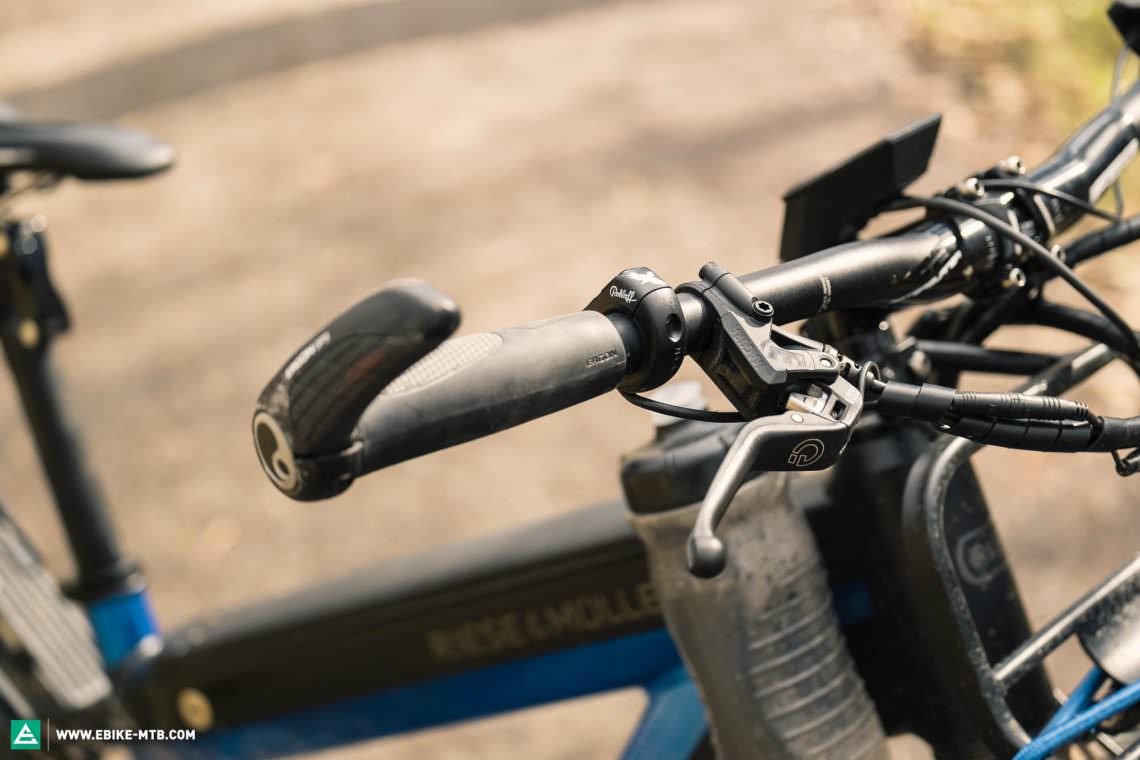
Riese & Mueller have made big improvements to the successor in this regard as the Supercharger2 comes specced with the MAGURA MT5 up front. While we’re not entirely happy with the MT5 lever and would prefer a MAGURA HC-3 variant, the four-piston calliper is significantly more powerful and reliable on long descents. It would be great to have it on the rear too.
The lights on the Supercharger – Busch & Müller LUMOTEC/Supernova M99 vs Supernova M99 MINI PRO-45
Basically, the Riese & Müller Supercharger HS is a set-and-forget bike. The same applies to the Busch & Müller and Supernova lights on the Supercharger GX. The lighting is sufficient for everyday commuting in the city and even in the woods. However, if you’re used to the power of the Supernova M99 MINI PRO, you’ll likely want an upgrade. Riese & Müller have evidently noticed this themselves, quipping the Supercharger2 with Supernova’s flagship headlight as standard. The high beam function on the Supernova M99 MINI PRO-45 is a real game changer for commuting through night-time traffic and on unlit paths. Neither snow nor the stormiest weather could dim the lights and we saw clearly until the end.
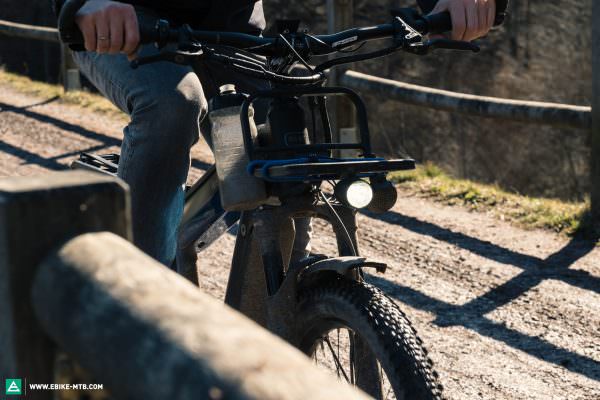

Tire choice – Schwalbe Rock Razor or Super Moto-X?
If we had to choose a tire for varying terrain and weather conditions, it would be the Schwalbe Rock Razor ADDIX Soft. Its rolling and braking characteristics are good on asphalt roads while offering sufficient grip on gravel and damp forest paths. Thanks to the Rock Razor’s pronounced shoulder knobs, you’ll remain safely on course even in the wettest conditions. We would have had to replace the rear tire for the first time after a total of about 2,000 km. If you want to go all out, you can either opt for the Super Gravity version of the Rock Razor with the extra soft rubber compound and indestructible casing or swing the other way with Schwalbe’s semi-slick Super Moto-X for maximum on-road performance.
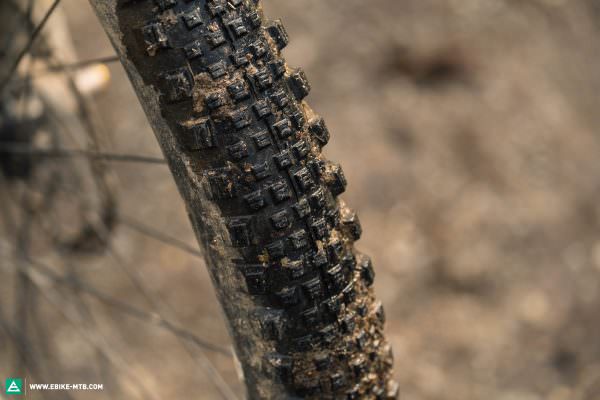
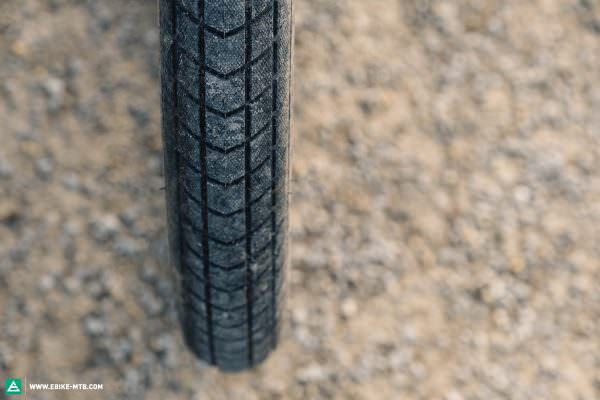
We tried all three tires and ultimately stuck to the Schwalbe Rock Razor Evolution ADDIX Soft Super Gravity. Sure, the soft rubber compound wears down very quickly on asphalt. However, it saved us from spending at least one night outdoors as the extremely sturdy carcass allows you to ride home with a flat tire without having to worry about your rims. The grippy rubber compound and aggressive tread will also keep you safely on course through snow and mud.
Suspension fork – SR Suntour AION
While the suspension setup on an eMTB can get quite involved, the Suntour AION on the Supercharger is comparatively simple to set up. We pumped the air pressure to approximately 80 psi with a rider weight of 85 kg and adjusted it slightly with a load on the front rack. We recommend keeping the rebound setting relatively quick (approx. 75% from slow to fast) to allow the fork to react quickly to potholes and bumps. We kept the compression damping all the way open during the test for the best possible response.

Motor/battery – Bosch Performance Line Speed or Performance Line Speed Gen 4?
We don’t have to think too long to answer this question. However, the updates of the new generation didn’t exactly rock our world. If you think 1,000 Wh is enough to circumnavigate the globe, you’ll be disappointed with the reality. But why circumnavigate the globe when all you have to do is travel 20 km to the office? Practice showed that our editor Valentin usually got around 70 km with 1,000 Wh – without making any effort. With the fourth generation Bosch Performance Line Speed in the Supercharger2, his range increased by about 5–10 km. To illustrate: he was able to ride to work and back about 3½ to 4 times in the highest support level and without breaking even the slightest sweat, covering 20 km and approximately 300 meters of elevation each way.

Cold winter weather had a slight effect on the range and we used around 5–10% more battery on average. Riding with the Bosch Performance Line Speed in flat terrain, you can usually travel at around 36 kilometres/hour without putting in excessive effort. The fourth generation of the Performance Line Speed is only marginally faster. That said, it’s more than fast enough. During the past year, we rarely found ourselves longing to ride 45 km/h, though if you put in the effort, both Bosch motors willingly accelerate to the maximum speed. The fun stops as soon as you hit an incline and no matter how much effort you put in, you won’t be able to ride any faster than 38 km/h with the Bosch Performance Speed Line. Even the latest generation rarely went faster than 40 km/h on the climbs. Neither of the Bosch Line Speed motors gave any technical problems during the test period and simply kept performing as they did on the first day. The Bosch logos on both models rubbed off after a few months.
The suspended seat post
We were very impressed with the added comfort offered by the suspended seat post. The damper in the seat post is particularly useful over light bumps and even harder hits as it spares your backside and spine. However, we struggled until the end to get the seat post to stay at the height we wanted it, at least as long as we stuck to the specified torque of the seat clamp bolt. The seat post kept sliding down a few centimetres within a few kilometres of riding. Unfortunately, we encountered this problem on both Supercharger models and could only solve it by over-tightening the bolt and using friction paste.
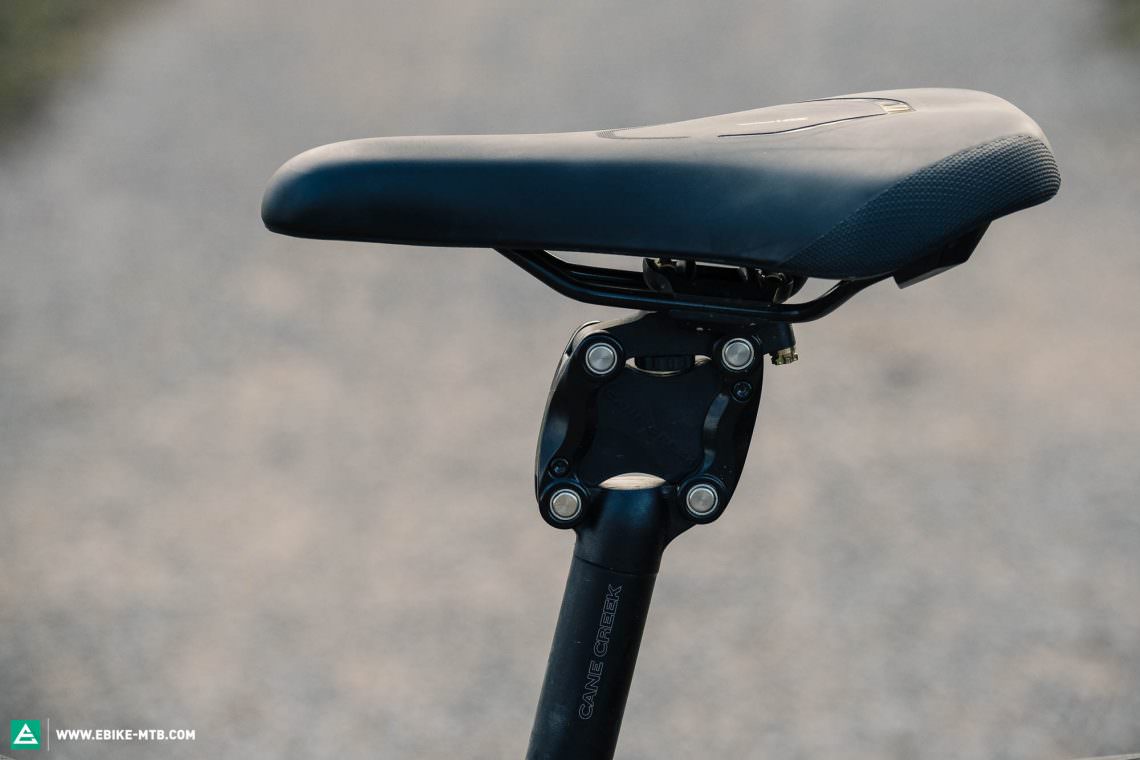
RX Connect
A unique selling point of the Supercharger2 over its predecessor is the integrated RX Connect chip, which is supplied with all current Riese & Müller bikes. Starting at € 40 per year, the bike can be located via GPS in the event of theft, and depending on the package, it will also be replaced by Riese & Müller at the same value. The chip can also send you a notification when it detects movement on the bike and allows you to call up your personal riding characteristics. Of course, these functions are available internationally with full comprehensive insurance and 24/7 customer service.

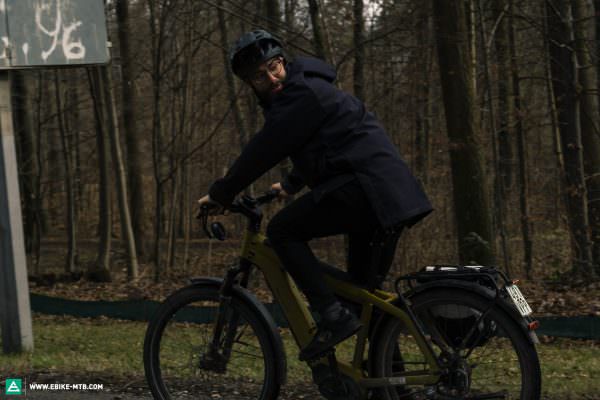
The Superchargers and their maximum permissible weight
Even if the Supercharger gives the impression of a cruise ship, the maximum payload is more like that of a rowboat. The calculation is simple: 140 kg maximum permissible weight minus the 30 kg weight of the bike and a rider weight of 85 kg (as with our tester Valentin) leaves you with a 25 kg maximum payload. Since the rear racks on the Supercharger models are limited to 27.5 kg in any case, it worked perfectly for Valentine. However, if you’re a heavier rider or want to load more than 25 kg, the bike will quickly reach its limits. That said, we have to emphasise that 25 kg is usually more than you need for a week’s shopping or a multi-day trip. It’s just that the look of the bike gives the impression of being able to haul much heavier loads.
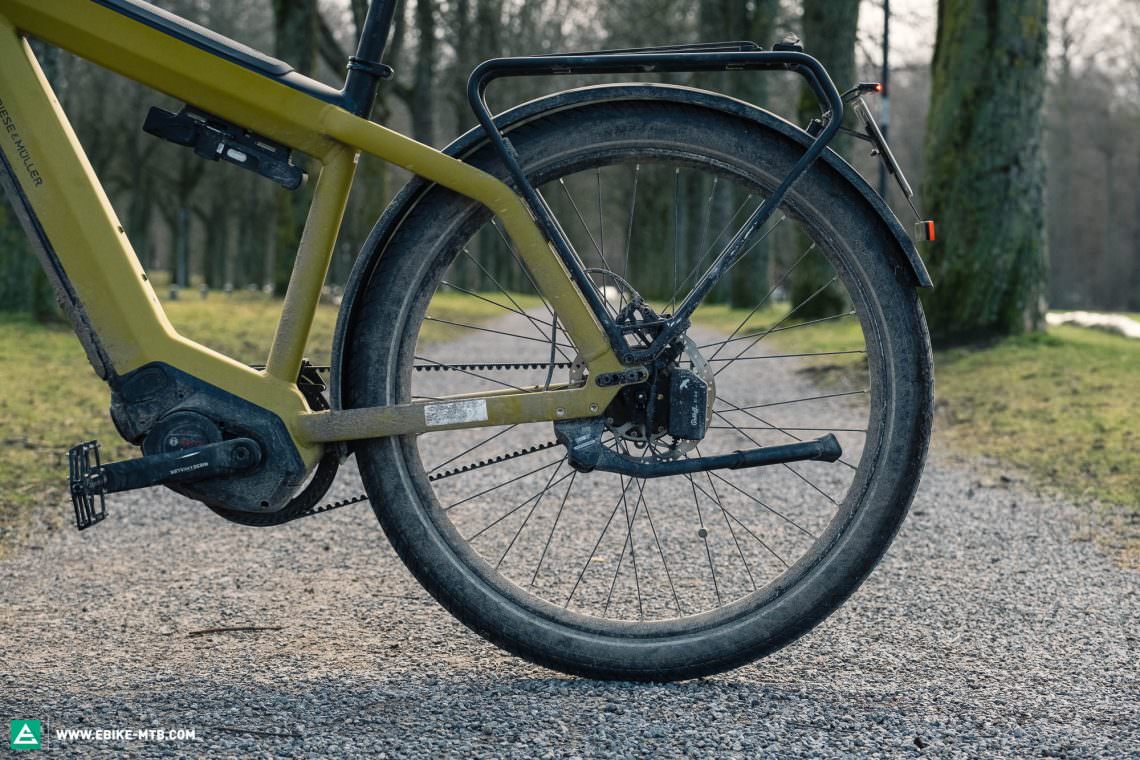
2019 Riese & Müller Supercharger and 2020 Supercharger2 in the long-term
How does the Riese & Müller Supercharger GX Rohloff HS ride? Everyone in our team who sat on the S-pedelec over the years immediately felt comfortable. Even if the bike’s hefty weight feels a bit strange at first, the wide handlebar and the upright riding position instil the rider with confidence. The rider’s weight distribution is nicely balanced between the handlebar and saddle, generating enough grip on the front wheel without any feelings of numbness on long rides. When loaded, the handling of the Riese & Müller remains stable and comfortable – at least at lower speeds. In extreme situations and at high speeds, it is important to keep enough weight on the front wheel or it may start wobbling. As soon as you put some weight on the front wheel, the bike’s handling stabilises. In contrast, we tested the street version of the Supercharger2 and in a frame size smaller. Thanks to the narrower handlebars and revised frame, the handling of the new Supercharger2 is much more direct and agile. The smaller frame meant that we always had enough weight on the front wheel, even when sitting upright, which resulted in very stable handling.

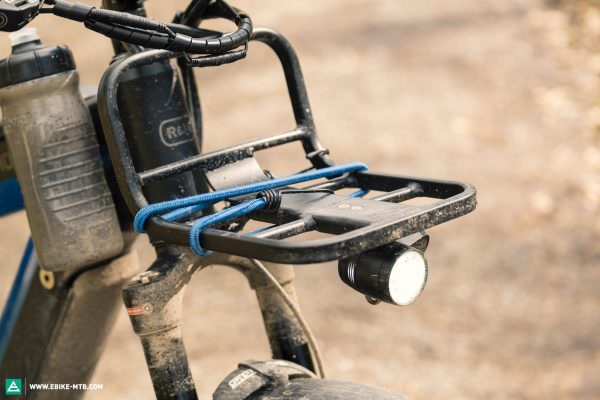

In the city, the GX with its wide handlebars and knobby tires has to give way to its semi-slick colleague. Although the more off-road oriented tires also work well on asphalt, the disadvantages of the smaller contact area compared to a semi-slick tire aren’t up for debate. The wider handlebars can also make navigating city traffic somewhat tricky at times. Generally, the Supercharger GX is a roomy bike that is particularly comfortable on long rides and wide paths, though it takes an experienced rider to navigate cramped city roads. The Supercharger2 was much better in this regard. When fully loaded, the handling of both bikes becomes much more sluggish, though this is to be expected with a 25 kg load. With heavy panniers and a load on the front rack, the Supercharger GX remains safe to ride and easy to control, though the handling is slower and you have to be a little more careful.
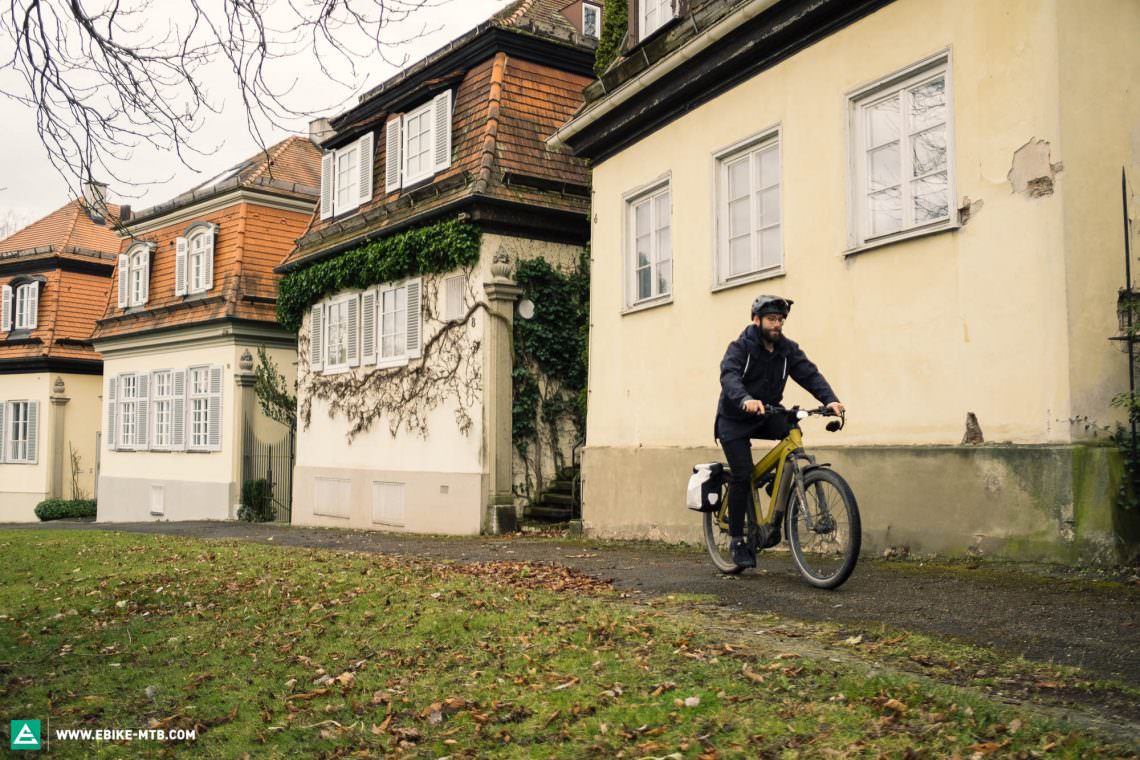
The Supercharger GX makes for a capable and reliable climber on forest service roads. It only reaches its limit in steep terrain with tight hairpin bends. In general, the Supercharger GX feels most comfortable on forest roads and it’s hard to beat in that kind of terrain. Thanks to the grippy tires, wide handlebars, suspension fork and the suspended seat post, you can keep on going off-road forever. However, you will quickly be reminded of the bike’s weight when you hit a corner or a steep descent, especially since it doesn’t cut out at 25 km/h like a standard ebike. We recommend taking corners and descents easy at first, gradually going faster as you get used to the bike. When you’re used to it, the Supercharger proves to be capable and fun through corners and stable on steep descents. As already mentioned, we would replace the brakes with more powerful models. The standard spec of the Supercharger2 didn’t perform well off-road with the Schwalbe Moto-X tires. However, it also turned out to be a lot of fun on gravel corners after switching to Rock Razor tires. If you find yourself between two frame sizes, consider how you intend to use the bike. Since our Supercharger GX was mainly intended for long distances and we knew that we wouldn’t have to navigate any narrow obstacles on our regular routes, we benefited significantly from the composure offered by the larger frame. If you’ll be riding in the city and have to pick your way through parked vehicles, we recommend the smaller frame size for more agile handling.
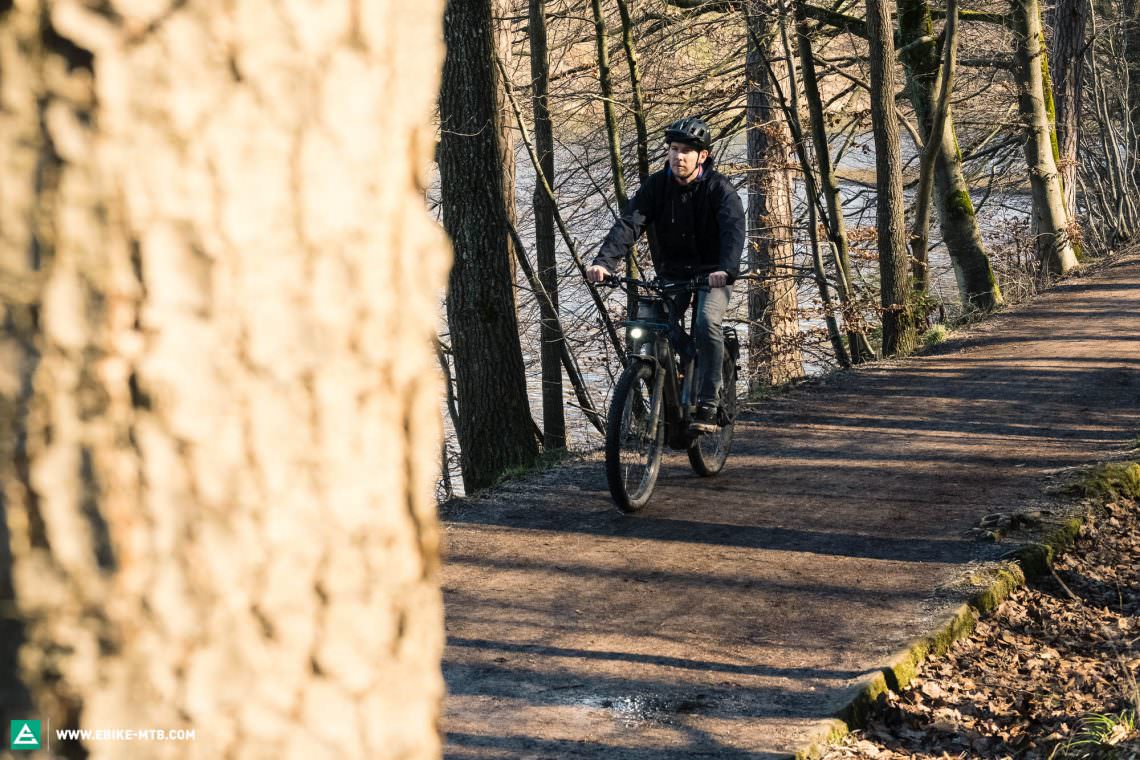
Conclusion
For around € 8,000, Riese & Müller’s Supercharger models offer a turn-key solution for commuters and mileage veterans. The GX version is the bike of choice for long-distance riders and forest road commuters thanks to wider handlebars, bar-ends and the additional front rack. What the first generation of the Supercharger lacks is mostly made up for by the latest model, which was launched along with the introduction of Bosch’s new generation motors. The current Supercharger2 is a well-rounded and modern concept, the street version of which is sure to please the urban explorers among us while the GX version is a loyal companion for full-time commuters as well as weekend warriors.
For more information, visit www.r-m.de
Tops
- low maintenance
- safe handling
- very reliable
Flops
- Rohloff drivetrain takes getting used to and shifts slowly
- limited payload despite a multitude carrying options
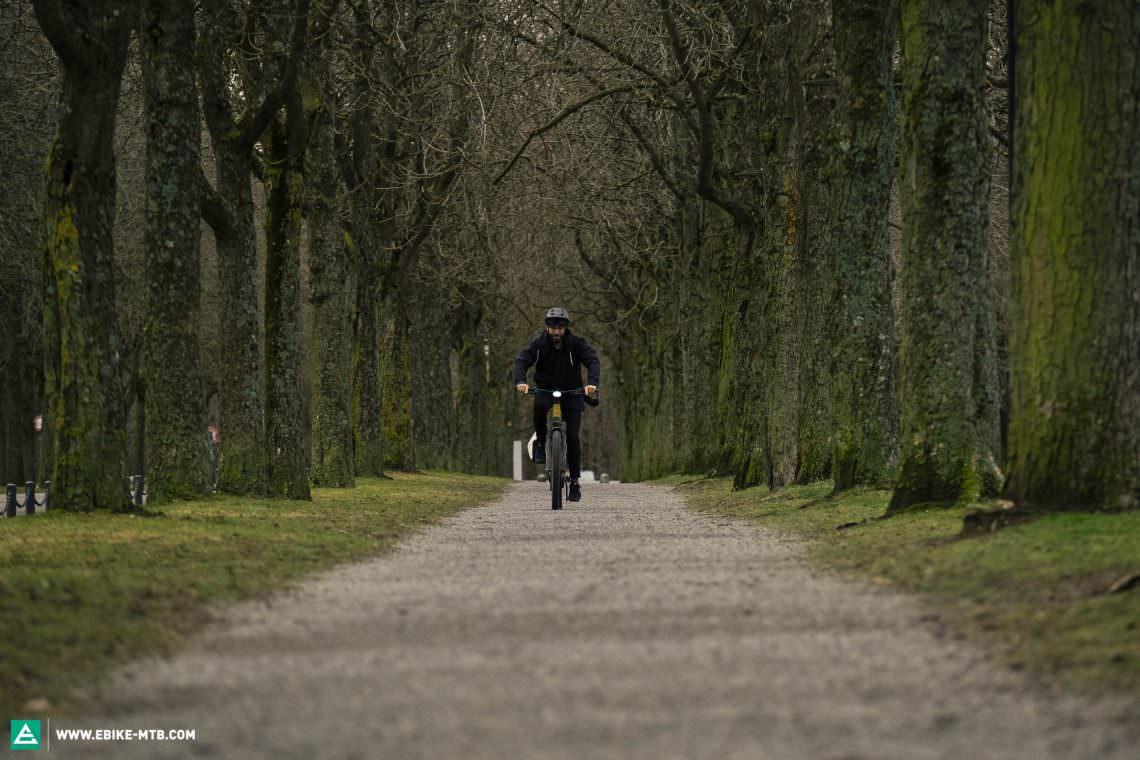
Did you enjoy this article? If so, we would be stoked if you decide to support us with a monthly contribution. By becoming a supporter of E-MOUNTAINBIKE, you will help secure a sustainable future for high-quality cycling journalism. Click here to learn more.
Words: Photos: Jonas Müssig, Philipp Schwab, Valentin Rühl









